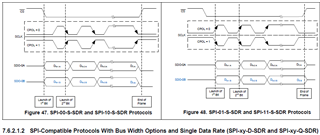Hi,
The ADS9234R datasheet specifies the maximum delay time from SCLK launch edge to next data valid on SDO (td-ckdo 15.8ns for SDR). What is the minimum time delay? If we plan to read SDO pin immediately after SCLK launch edge how fast can we safety accomplish this?


